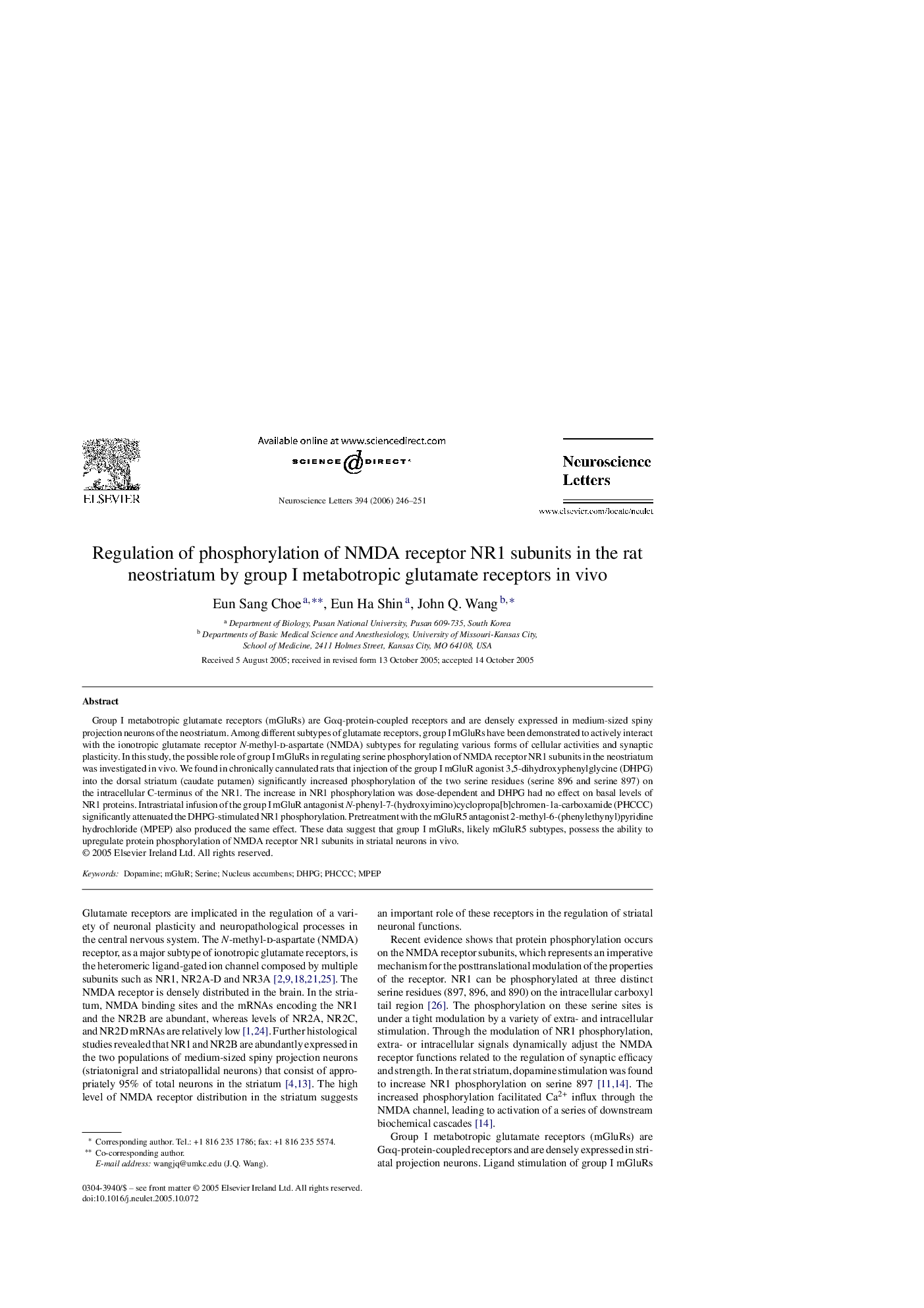| Article ID | Journal | Published Year | Pages | File Type |
|---|---|---|---|---|
| 4351174 | Neuroscience Letters | 2006 | 6 Pages |
Abstract
Group I metabotropic glutamate receptors (mGluRs) are Gαq-protein-coupled receptors and are densely expressed in medium-sized spiny projection neurons of the neostriatum. Among different subtypes of glutamate receptors, group I mGluRs have been demonstrated to actively interact with the ionotropic glutamate receptor N-methyl-d-aspartate (NMDA) subtypes for regulating various forms of cellular activities and synaptic plasticity. In this study, the possible role of group I mGluRs in regulating serine phosphorylation of NMDA receptor NR1 subunits in the neostriatum was investigated in vivo. We found in chronically cannulated rats that injection of the group I mGluR agonist 3,5-dihydroxyphenylglycine (DHPG) into the dorsal striatum (caudate putamen) significantly increased phosphorylation of the two serine residues (serine 896 and serine 897) on the intracellular C-terminus of the NR1. The increase in NR1 phosphorylation was dose-dependent and DHPG had no effect on basal levels of NR1 proteins. Intrastriatal infusion of the group I mGluR antagonist N-phenyl-7-(hydroxyimino)cyclopropa[b]chromen-1a-carboxamide (PHCCC) significantly attenuated the DHPG-stimulated NR1 phosphorylation. Pretreatment with the mGluR5 antagonist 2-methyl-6-(phenylethynyl)pyridine hydrochloride (MPEP) also produced the same effect. These data suggest that group I mGluRs, likely mGluR5 subtypes, possess the ability to upregulate protein phosphorylation of NMDA receptor NR1 subunits in striatal neurons in vivo.
Related Topics
Life Sciences
Neuroscience
Neuroscience (General)
Authors
Eun Sang Choe, Eun Ha Shin, John Q. Wang,
